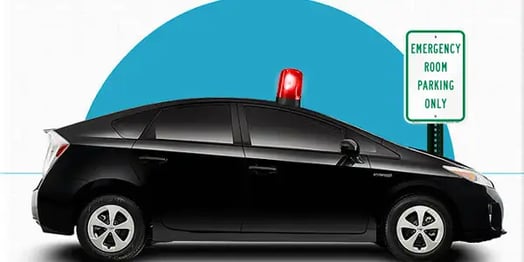A study from the University of Kansas found a 7% decline in ambulance calls in areas where UberX is available.

While correlation doesn’t equal causation, anecdotally, we’ve heard corroborating stories — our CEO Sam called an Uber when his appendix burst at the grocery store and was at the hospital in 10 minutes flat.
And it raises an interesting point: when should you call an ambulance, and when is it just better to call an Uber?
When you’re not bleeding out and don’t have $5k to burn
Plenty of people call ambulances for non-emergencies — which not only takes up resources that would otherwise go to real emergencies, but costs the recipient a pretty penny (ambulance rides can cost anywhere from $450 to $5,000).
Although Uber and Lyft discourage riders from calling cars for emergencies, according to Slate, most medical professionals interviewed agree it’s fine to go the rideshare route, provided you’re not having:
- Trouble breathing
- Severe pain
- Pregnancy-related complications
- Suspected internal bleeding
- Signs of stroke (numbness, weakness, or speech problems)
Depending on where you are, an Uber may be faster
Data from more than 1.75m EMT calls in 2015 shows that it takes an ambulance about 7 minutes to arrive at the scene in a urban or suburban area — but ambulances can speed through traffic and EMTs can provide medical care on the way.
At the end of the day it’s on you to make the call… probably depending on your traffic and rate of blood loss.

